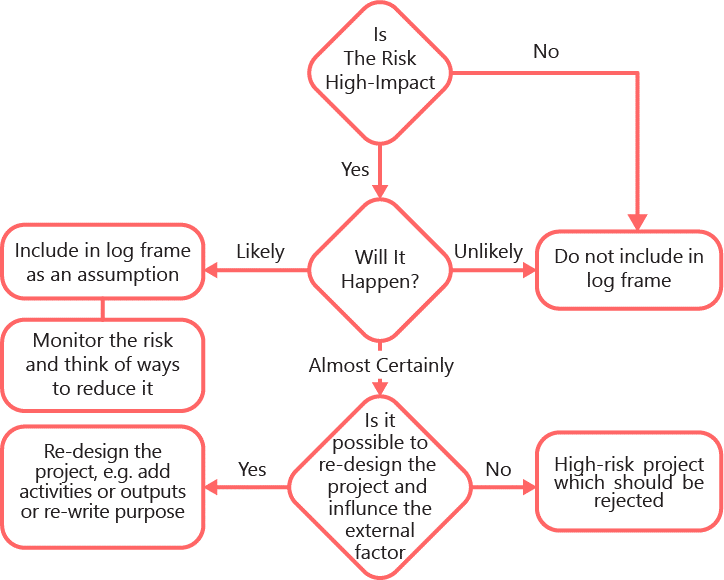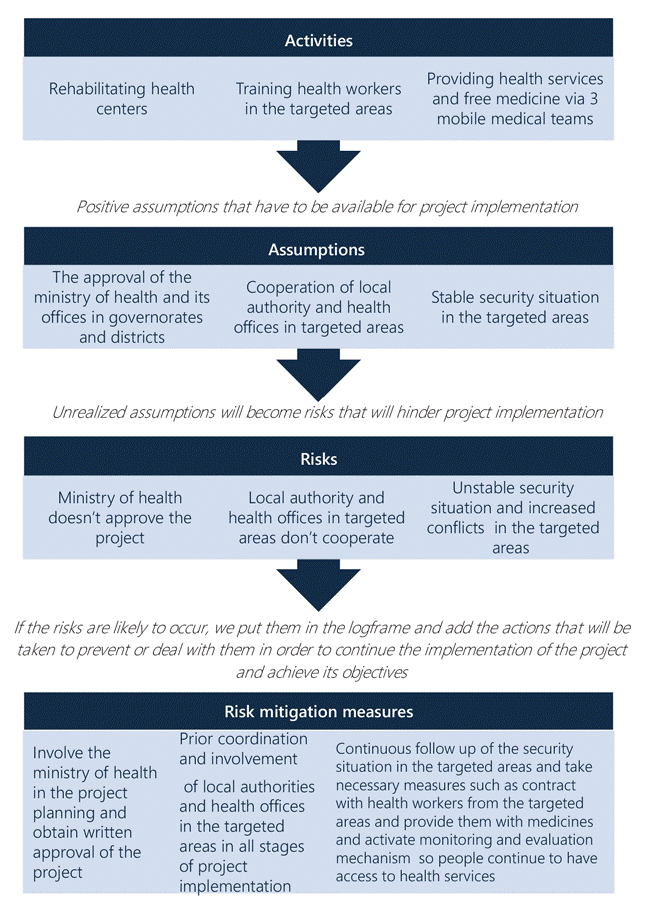Articles and How-to Tutorials for NGOs
Logical framework (Risks and risk mitigation measures)
Written by Adel SalahThe identification of the assumptions and risks helps in clarifying whether the proposed objectives and activities are realistic and achievable during the time of the project implementation with the proposed human and financial resources; it further ensures that internal and external circumstances surrounding project implementation are suitable and will help in implementing the project.
Assumptions:
The assumptions are the external factors we expect to happen and we want them to actually happen, because their occurrence is required so we can implement the activities and successfully achieve objectives and reach outputs and outcomes. Therefore the assumption is the necessary and desirable situation to happen so that activities can be implemented and goals achieved successfully.
Risks
Risks are unrealized assumptions. Therefore, unrealized assumptions become a threat that leads to the termination of the project or implementation difficulties.
Risk Identification Tree
The Activities, assumptions, risks and risk mitigation measures process.
Types of risks that may occur:
Legal risks: such as lawsuits that are filed by the project’s beneficiaries as a result of non-application of standards that led to excluding the ones who are eligible for the assistance.
Lawsuits can be filed by the residents in the targeted area who are directly affected by the project implementation, like uncompleted water project after a deep well is drilled due to a problem, lack of funding or contractors faults.
Regulatory risks: one of specialized government agencies is absent and not involved in planning and coordinating prior to activities implementation. Other risks can be: weak procedures in the announcements and opening of tenders; or not specifying clear procedures that help in implementing activities in the required quality, which leads to inadequate performance that may make it difficult to achieve the desired project results. In addition, the implementation plan or monitoring and evaluation plans were not clear and responsibilities, requirements and time periods were not clearly defined.
Technical risks: there may be errors or deficiencies in projects’ design, where constructions or rehabilitation is required in health facilities, schools and water projects; or when inappropriate technology is used, or there is unavailability or shortage of required materials for implementation.
Location risks: there may be disputes on the ownership of the place or the area that was chosen to implement IDPs or refugee’s camps; or local residents may refuse the existence of these camps or sanitation, which is going to be built near their villages.
Financial risks: there may be changes in exchange rates (currency fluctuation) and a decrease in the local currency, which will result in a rise in the required materials such as food baskets, building materials and workers’ wages.
Social risks: failing to form community committees or excluding influential people in the targeted community; not involving them and coordinating with them will lead to hindering project implementation, filing complaints and difficulties in handling such complaints.
Political and security risks: conflicts of interests may arise between the political components in the region because of the project implementation, or there may be conflicts and security problems that lead to the termination of the project due to the difficulty for the project’s staff to be present in the targeted area; this, in turn, makes it difficult to monitor activities’ implementation and evaluate achieved objectives.

